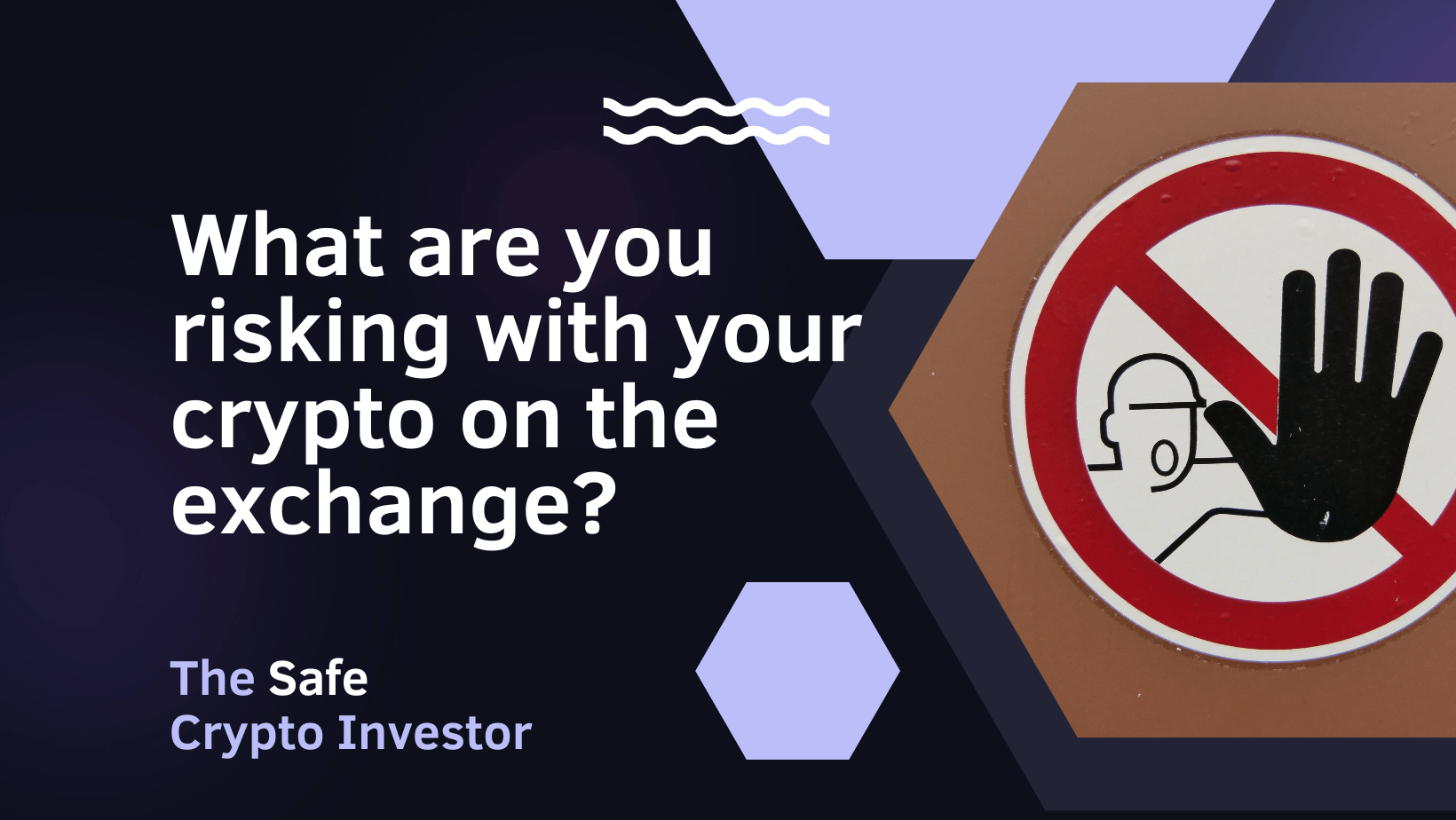What are you risking with your crypto on the exchange?
Take a look at this twitter post. These people had crypto on the exchange.
Aaaand it’s gone.

Maybe not completely when Japan’s government steps in. Unfortunately, this is not for all people in the world. Many lives of people are broken.
Man, it sucks if you lost money on an exchange. I feel your pain.
Nearly $2.72 Billion has been stolen from crypto exchanges since 2012. At least 47 crypto exchanges have lost funds through a major cybersecurity breach. It is a matter of time before this is going happens (again) to you.
If you want to protect your crypto assets then you need to find a way to use the crypto exchange safely.
Let me list some of the ways people lose money on an exchange:
- Data leak
- Access to hot wallet (your wallet on the exchange)
- Compromised server
- Insider job
- Bugs in the software
- Phishing data on fake site
- DNS compromise
- Unauthorized transaction
- Sending a transaction to the wrong hot wallet or using a wrong protocol
- Leverage trade without any plan, knowledge, and experience
A lot of people lose a lot of money.
Let’s take a look at some examples on Twitter.
This guy didn’t take profit, not even a small profit when riding the bull run. Finally, he lost his nano (XNO) with the Bitgrail hack.
With the Solana hack almost 8000 (SOL and USDC) wallets have been drained with an amount of just over $5.2 million.
David (from the tweet above) did it well because he has a diversified crypto portfolio. He lost some but he didn’t lose all his capital. A diverse crypto portfolio doesn’t only protect you from (bad) exchange but also from a wallet and on-chain hacks.
This tweet from Crypto Data Wizard is a very common issue: sending crypto to the wrong address. Just mistype one character of the address and your money is gone.
I can imagine that you think that trading in crypto can be scary.
But please don’t be afraid.
I will share a set of rules you can follow that will hugely reduce the risk when working with exchanges.
Using crypto exchanges: with the Risk in Mind.
Exchanges are currently mandatory if you want to deposit or withdraw money from crypto. They are the on-ramp to the crypto world.
Unfortunately, we can’t remove all risks but we can be aware of them and be as careful as possible.
Generally, there are five risks when having your money on the exchange:
- You don’t own the keys so technically you are lending money to the exchange. If they get bankrupt, you lose your money.
- The exchange is a single point of failure so hackers are far more willing to hack all the wallets of an exchange than specifically your hardware wallet because that is a better return on investment.
- Sending and receiving crypto between the exchange and your wallet.
- Leverage trading.
- On- and off-loading the money to your traditional bank.
For all these risks there are rules you can apply that will reduce your risk. Let’s take them one by one.
1. Not owning the keys
Reduce risk:
Put only a percentage of your capital on an exchange for a limited time. So if you want to withdraw 25% of your capital. Do this over a longer period and split the 25% of your capital into small pieces. Like 5%, 10%, and 10%.
If there is something broken on the exchange you would only lose the first 5% capital instead of 25% at once.
Of course you can decide how you want to split your capital. With a larger capital you want to reduce the percentage. Use for example first 1% instead of 5%.
2. The exchange is a single point of failure (more vulnerable to hackers)
Reduce risk:
Firstly, reduce the amount of crypto on the exchange
and the amount of time having crypto on the exchange.
Secondly, always have multiple plans to withdraw your crypto to your bank account.
If plan A with Binance does not work then try to withdraw with ByBit as plan B.
And if that does not work, then have a plan C, for example, Bitvavo.
3. Sending and receiving crypto between the exchange and your wallet.
Reduce risk:
There is always a risk in sending crypto but there are ways you can minimize this:
- Never manually type the crypto address. Always use the copy / past function.
- Always check the first and last 5 characters. This way you know you didn’t paste the wrong address.
- Always check if you are using the correct protocol for the coin.
- Try to save the address to the address book. This way you always know you are using the correct address.
- If it’s a new address, try to send a little bit of crypto to the address before sending all your coins.
4. Leverage trading
Reduce risk:
Leverage trading is a great tool if you are very experienced in this field. Be aware that this is not for everyone and you first need to build years of experience before you step into this game. Here are some key points:
- If you are just beginning, don’t use leverage. Wait for more experience in crypto.
- Start with a very small capital (something you are willing to lose).
- Always use risk management.
- Never risk more than 1% of the capital you set aside for leverage trading.
5. On- and off-loading the money to your traditional bank
Reduce risk:
All that I said in point 2 applies to this too. Especially having multiple plans to withdraw your money.
Regulations in countries are getting tighter, and that is a good thing. Because they sometimes guarantee your money if the exchange is hacked. But be aware that you to conform to the regulations on crypto exchanges. The most important one is KYC (know your customer). There is a big chance that you need to identify yourself if you want to withdraw or purchase crypto with your credit card or bank account.
Using an exchange that is backed by the government does reduce the risk. You still need to research what is possible in your country.
Don’t lose your hard-worked money on an exchange. You can’t prevent all the risks but by using the above tips you can hugely reduce the risks of losing money.
Stay safe and best of luck.
Daniel Donselaar







